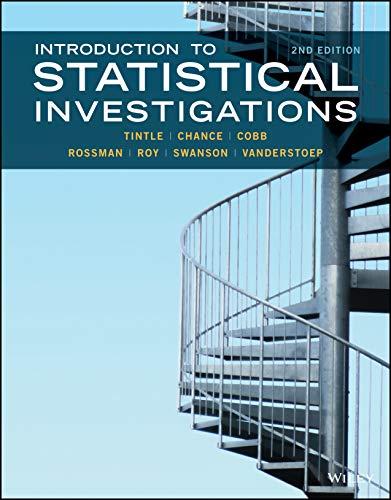Researchers Chaddock-Heyman et al. (2015) investigated the role of aerobic fitness in mathematical achievement in preadolescent children.
Question:
Researchers Chaddock-Heyman et al. (2015) investigated the role of aerobic fitness in mathematical achievement in preadolescent children. They had 24 children in their high fitness group (>70th percentile as measured by a VO2 max test) and 24 children in their low fitness group (<30th percentile as measured by a VO2 max test). These children, 9 and 10 years old, also completed the mathematics portion of the Wide Range Achievement Test. These results are in the file VO2Math. We want to see whether those who are more fit tend to have higher mathematics achievement. Put the data in the Multiple Means applet to answer (a)–(e).
a. State the hypotheses to test this either in words or using appropriate symbols.
b. What are the mean math scores for the two groups?
c. What are the values of the t-statistic and corresponding theory-based p-value?
d. Is there strong evidence that students that are more fit tend to have higher mathematics achievement scores? Can you determine that one causes the other? Explain.
e. The researchers reported that in there were 14 boys and 10 girls in the high-fit group and 8 boys and 16 girls in the low-fit group. Could a child’s sex be a confounding variable? Explain what else we would want to know in order to say that a child’s sex was confounding.
Step by Step Answer:

Introduction To Statistical Investigations
ISBN: 9781119683452
2nd Edition
Authors: Beth L.Chance, George W.Cobb, Allan J.Rossman Nathan Tintle, Todd Swanson Soma Roy





